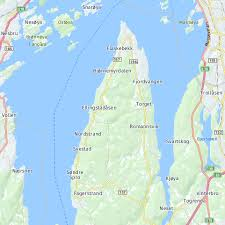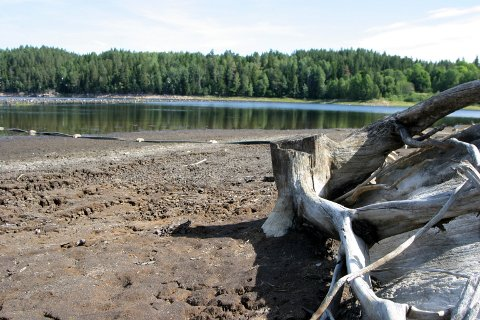What are the challenges and what are the measures being taken?
Written by Sofia Barton and Daniel Brandeggen.
27th March 2020
Introduction
In this essay we discuss how polluted masses from road construction, salting and littering can affect the drinking water quality, and the quality of freshwater and sea water on and around Nesodden.
Study area
Nesodden is a peninsula in the Oslo fjord with a population of about 20.000 inhabitants. In Norway everyone has access to clean drinking water and the water supply is mostly from surface water. In Nesodden we have four municipal waterworks, at Blekslitjern, Kirkeåsen, Jaer skole and Fagerstrand. The waterworks main source of water is Blekslitjern. Nesodden also imports water from Bærum municipality when there is a local shortage.

Runoff from roads and drinking water
On Nesodden municipality’s web page they claim that the residents that live here have access to perfectly clean drinking water. But that does not mean we don’t pollute freshwater and saltwater in the environment. In the society we live in we construct roads, salt and pave them. People also drop litter on the pavement. How sure can we be that these sources of pollution don’t end up in our drinking water sources or in aquatic environments? How sure can we be that Nesodden municipality is making sure that this doesn’t end up in for example Blekslitjernet or the Oslo fjord?
Interview with Marianne Olsen from Miljødirektoratet (the Norwegian Environment Agency). We used Google Translate for parts of the interview.
How can runoff and road construction affect water quality?
Surface runoff from urban areas can contain environmental toxins and microplastics from road traffic (e.g. wear from car tires), contaminated particles (e.g. from fuelwood), and waste. Norway`s largest sewage treatment plant receives drainage from four different municipalities, among these Nesodden. In a few hours the water is treated and it’s all released into the Oslo fjord. Due to climate change, the amount of rainfall will increase in the years to come. This means that there will be larger amounts of water that end up in the sewer system. The drainage systems do not have the capacity to receive all the water, and the risk of having water that hasn’t been through a cleaning process will increase, and this will most likely end up in the fjord. Much surplus mass from road construction is filled into the sea along land to establish new land areas. To do this, road builders must have permission from the country governor in accordance with the pollution regulations. In such permits, the country governor set requirements to ensure that the landfill does not cause any significant damage to the natural environment. The pollution authorities have also made rules for how both polluted and clean masses from road construction can be landfilled to prevent damage to the natural environment. Contaminated masses from road construction must be dumped at improved landfills if the masses cannot be recycled or used for useful purposes in an environmentally safe manner.
How can salting and putting gravel on roads affect the water quality?
In the winter, there’s a lot of ice and snow on the roads. To keep the roads safe, we have to salt and put gravel on the pavements and roads. We salt the roads because of that But this also has its consequences on the fjord, lakes and ponds. Dumping of contaminated snow in watercourses or landfills can pose local pollution problems. Excess snow may contain microplastics, sand, gravel, salt and garbage as well as environmental toxins/heavy metal. Oslo municipality has therefore made an agreement with the NCC company to receive big amounts of snow that has been driven away from streets and roads in Oslo. The snow gets transported to NCC’s snowmelt plant, where its melted and cleaned. The purified melt water gets released into the Oslo fjord. Freshwater, like ponds and lakes, may get contaminated in a different way. Runoff from salting the roads can be dangerous for aquatic life. Runoff can wash salt off from the roads, and this may end up in lakes like Blekslitjernet. The salt is heavier than the freshwater, so this will fall to the bottom of the pond and the freshwater will go to the top. This creates a separation between the salt and the freshwater. In the autumn, when there’s a lot of wind, there won’t be as much circulation in the water as there usually would be, and the water can end up with oxygen deficiency (anoxic). And fish and living creatures that live in the pond need oxygen to survive.
What is being done to prevent that these environmental toxins end up in aquatic environment?
The Storting has unanimously decided that the government will present a comprehensive plan for the Oslo fjord with the aim of promoting active outdoor life and achieving a good environmental condition in the fjord.
Here’s a list few things that are being done to protect the aquatic life around Oslo and Nesodden:
– As mentioned, the NCC snowmelt plant has agreed on receiving on receiving snow from streets and roads in Oslo.
– The sewage treatment plant VEAS receives drains from Oslo, Asker, Bærum and Nesodden.
The Norwegian Public Road administration and the company “Nye Veier” (New Roads) are project owners for road construction in Norway. They have to take certain precautions that can vary from project to project. Here are some examples:
- They have to monitor the roads that have been constructed around lakes to prevent lakes form being contaminated.
- Pebbles that are used to fill the sea must contain as little plastic as possible.
Conclusion
What are the main things to take away from the interviews? We think that although we may have access to perfectly clean drinking water on Nesodden, that does not mean we don’t pollute freshwater and saltwater in the environment. Runoff from salting the roads can be dangerous for aquatic life.
We also think that it is
important to know that, surface runoff from urban areas can contain environmental toxins and microplastics from road traffic, contaminated particles, and waste. Because of climate change the drainage systems do not have the capacity to receive all the water, and the risk of having water that hasn’t been cleaned will increase, and this will most likely end up in the fjord
To solve many of
these problems, the Parliament has asked for a comprehensive plan for the Oslo fjord with the aim of promoting active outdoor life and achieving a good environmental condition in the fjord.
